Conservation heroines – they’re all around us… everyday people like your neighbour, your Mum, your friend, or that clever inventor who lives at the end of your street. Conservation heroines are women who are using their passion, skills and talents to help our endangered wildlife to survive and thrive in our neighbourhoods and in the wild spaces beyond.
We’ve met a lot of conservation heroines here at Predator Free NZ Trust over the years and today – International Women’s Day – seems like a great opportunity to celebrate the outstanding effort and contribution to conservation that they’re making.
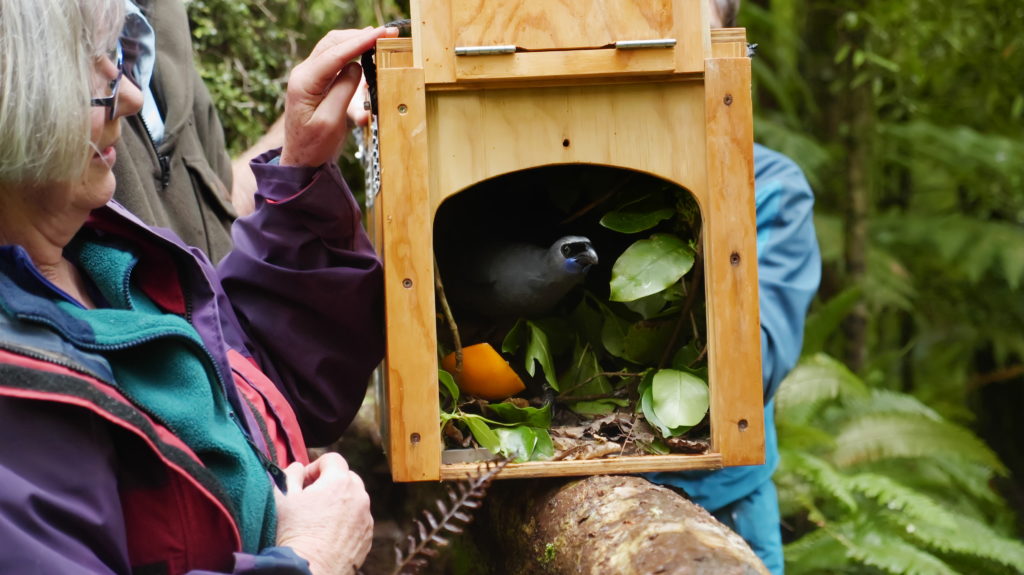
The community advocates
Take Karen Schumacher, for example. Together with husband Bob, Karen worked “8 days a week since 2004” to help kiwi at their QEII covenanted property at Purangi in East Taranaki.
“We started out trapping over 192 hectares in 2004,” Karen told us. “That increased to 3000 hectares in 2005 and by 2009 it was 13,000 hectares.”
Karen and Bob set up the East Taranaki Environment Trust to help the resident population of North Island western brown kiwi, but all the birdlife at Purangi benefitted from there extensive predator control programme. When we spoke to Karen back in 2018, kiwi, the indicator species, were increasing at a rate of around 9% per year.
Jo Halley works with kiwi too. She’s a ‘kiwi ranger’ working for the Paparoa Wildlife Trust, keeping track of roroa/great spotted kiwi in the Paparoa range near Blackball, on the South Island’s West Coast. Her work involves lots of crawling through scrub in search of roroa then digging and crawling into muddy burrows to change the year-old batteries in their transmitters before they go flat. When she’s out in the field, evenings are spent listening for kiwi calls, then it’s bed around midnight and up again early the next morning for more crawling through scrub and digging in muddy holes. Heroic? You bet!
Pohangina project volunteers since 2011. Drawn mainly from local tramping and deerstalking clubs, the Oroua-Pohangina project volunteers know the Ruahine area well and regularly brave high river levels and snowfalls to check and rebait traps.
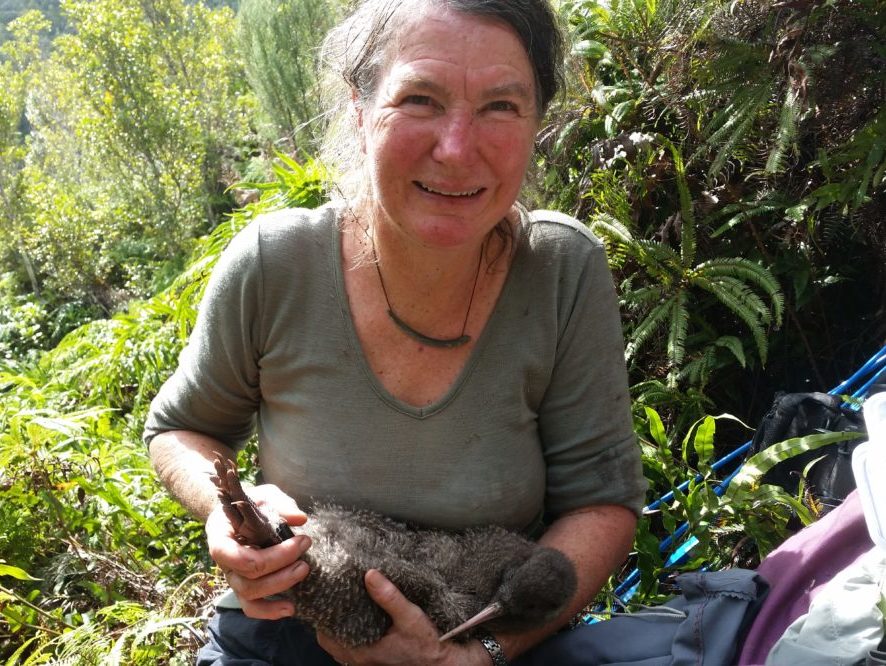
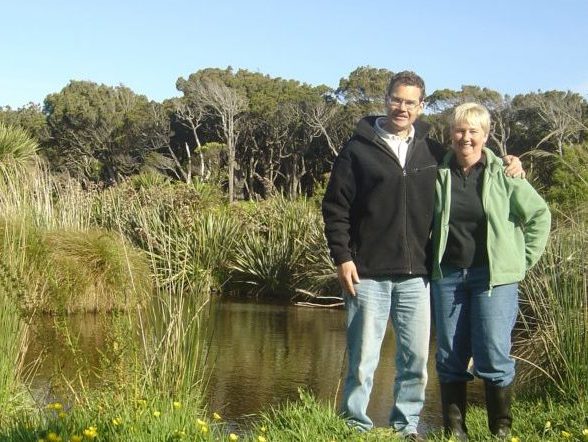
Then there’s Chris Rance from Southland who runs the Community Nursery and Education Centre in Otatara, which are built on land she owns with husband Brian. Part of the land, including a 500-year-old kahikatea remnant forest and a restoration area (once just a paddock), were placed under QEII covenant in 1999. Chris is a full-time volunteer at the Centre and is a big believer in getting kids out into nature where they can ‘learn by doing’.
Judy Gilbert, founder and voluntary manager of the Windy Hill Rosalie Bay Catchment Trust on Great Barrier Island reckons it’s not just wildlife that benefits from conservation project. Her long-running restoration project shows just how much a local community can gain if a commitment is made to help local people through employment opportunities. We spoke to Judy back in 2017:
“There aren’t a lot of jobs on Great Barrier Island,” she explained, “And there aren’t a lot of training opportunities for unemployed people to gain skills. Great Barrier is the poorest area in the Auckland region. We made it a core objective from the beginning to provide employment when we set up the Trust.”
The scientists
Conservation heroines sometimes wear white lab-coats too.
Hester is a senior molecular technician at Manaaki Whenua – Landcare Research, specialising in Ecological Genetics with a focus on Wildlife Forensics. When she’s feeling whimsical, she likes to describe her work as ‘CSI: Wildlife’. If, for example, protected species are being killed and the predator responsible needs to be identified, then Hester can help. She is part of EcoGene®, a small business unit within Manaaki Whenua that provides DNA diagnostic services.
Professor Carolyn (Kim) King is definitely one of our conservation heroines. She’s dedicated her research career to better understanding the ways and wiles of our introduced predators, especially weasels, ferrets and stoats and is internationally recognised as an expert on mustelids.
Wildlife vet Dr. Lisa Argilla and her team at the Dunedin Wildlife Hospital are heroines too – saving all kinds of native wildlife from predator injuries and the other hazards they face in our not-always-wildlife-friendly world. They’ve cared for kakapo chicks, penguins with shark bites, several kinds of kiwi and even some seals and sealions.
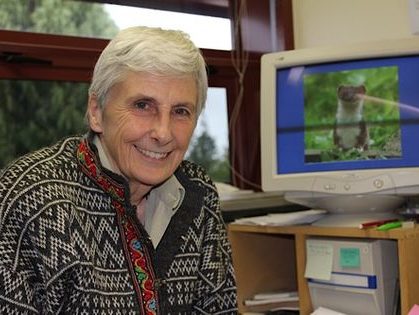
The inventors
Then there are our ‘heroine inventors’ – those who see a problem, sit down, have a think and solve the issue in the most ingenious ways… people like Hannah Smith who was fed up with rats getting into her compost bin, ignoring her rat traps and scoffing the yummy food scraps instead.
What to do? How about turning the whole compost bin into a rat trap? An escape-proof, rotating, fast-acting compost bin… Hannah knew what she wanted, but not how to get it. Then came the all-important ‘lightbulb moment’!
“Using a washing machine drum was a great development! It’s weatherproof, it has perforations for the compost to breathe, it’s rotational and its rat-proof, so the rats can only get in through the entrance.”
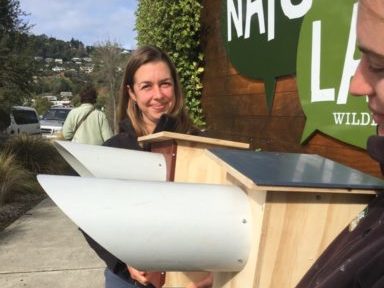
Kathryn Marshall is another inventor determined to help our mohua and kakariki breed more successfully. They’re cavity nesters – which means eggs, chicks and even incubating adults are an easy target for predators. Kathryn and her volunteer helpers from the Waimea Menz Shed have designed and built artificial nestboxes. A small entrance hole and a slippery metal plate on the front stops predators from climbing into the mohua nestbox, while a pipe cut at an angle makes a safe entrance for the kakariki nestbox. It’s too long for predators to enter from below and even the most agile predators can’t enter from above because of the sharp-angled slope of the pipe. The parakeets, of course, can simply fly in.
The artists
Finally, there are conservation heroines with artistic talents who are using their art to celebrate and support our endangered wildlife. In 2017, Hannah Shand took the plunge to become a full-time artist, swapping the 9-5 and long commutes for life on the Kāpiti Coast where she captures the engaging personalities of our native birds in her artwork.
“When I first decided to go full-time, I also decided that I wanted to do more than just create art,” she says. “One of my goals was to help the birds that I was drawing and spread awareness about the threats they face and learn about how we can help. I wanted to have some kind of positive impact, however big or small.”
“Forest and Bird’s online shop had just opened, so I contacted them to sell my art through the shop, with a percentage used for conservation. Nowadays I work with multiple different conservation groups and bird sanctuaries, like Zealandia and Sanctuary Mountain, where a portion of the money from sales goes to conservation.”
Adele Earnshaw regularly checks a trapline on her own Opua property and traps for possums, rats and mice. She is also an internationally successful artist using her art to raise funds to help kiwi. Adele joined the Bay Bush Action conservation group, helping out with volunteer work.
“But I’m better at painting then trapping,” she says, “So I presented my art print idea to the group a couple of years ago. It’s a good way for me to contribute personally.”
The project works like this: Adele sold a painting to one of her regular international collectors (a US collector based in Germany) and donated all the proceeds to Paihia Rotary who are using the money to cover printing costs etc for fine-art quality reproduction prints of the painting. The art prints are produced for Bay Bush Action at cost, by professional photographer/printer Dean Wright of Opito Bay and are available for sale ($75 unframed, $200 framed) through the Bay Bush Action’s website. Not only has Adele donated the original painting, she also donates her time to frame, pack and ship the prints to buyers.
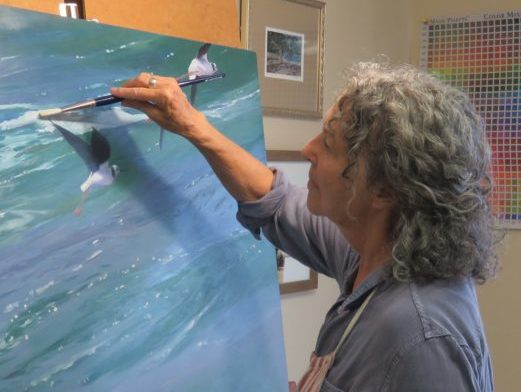
“I don’t make a penny from the prints myself. They’re printed at cost and when they’re sold, 100% goes to Bay Bush action,” she says.
So those are just some of the conservation heroines we’ve met over the last few years. There are many, many others doing the mahi, working their magic from Kaitaia to Rakiura and every place in between. Who are your conservation heroines? What are their stories? We’d love to hear about them.

